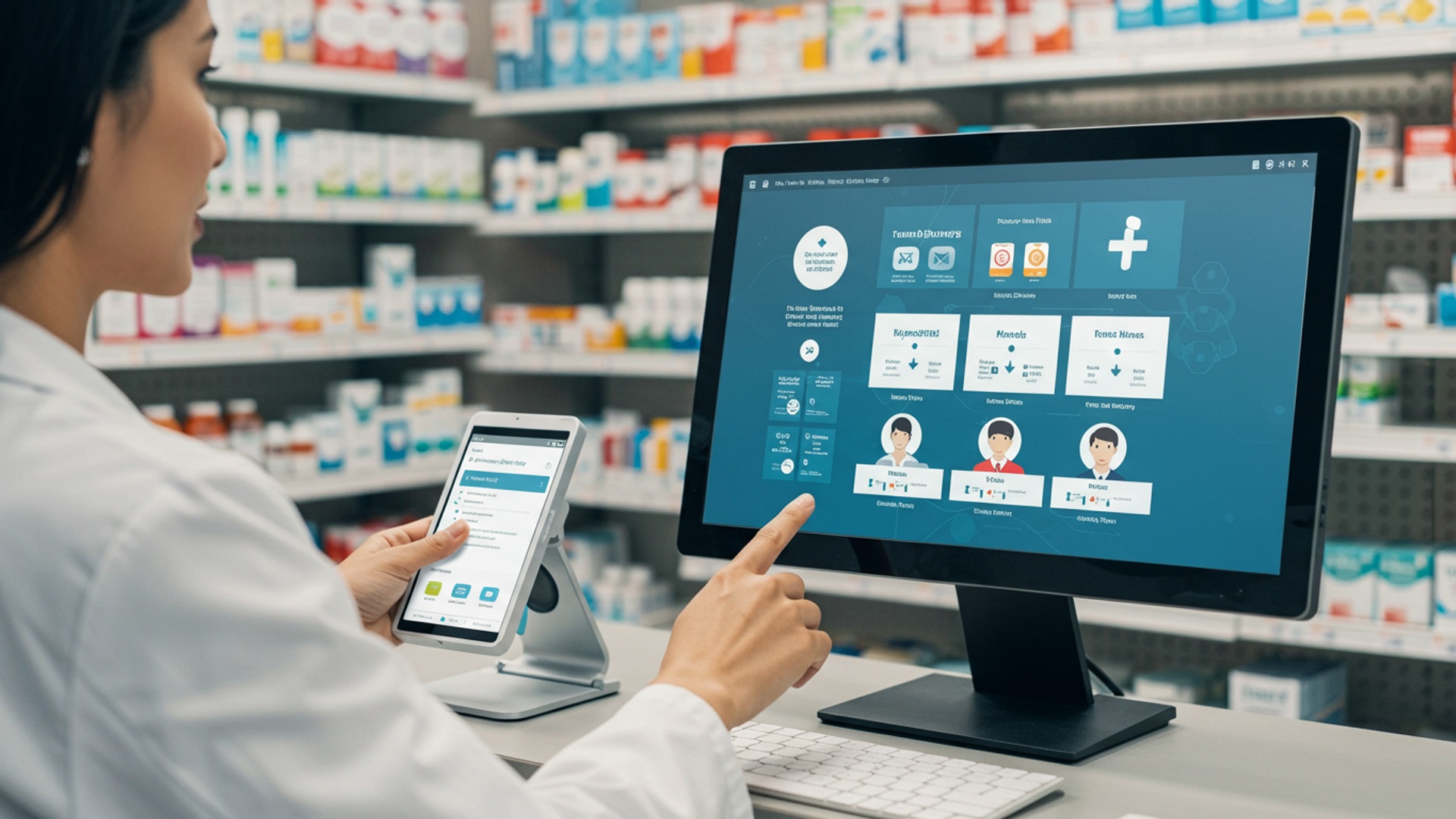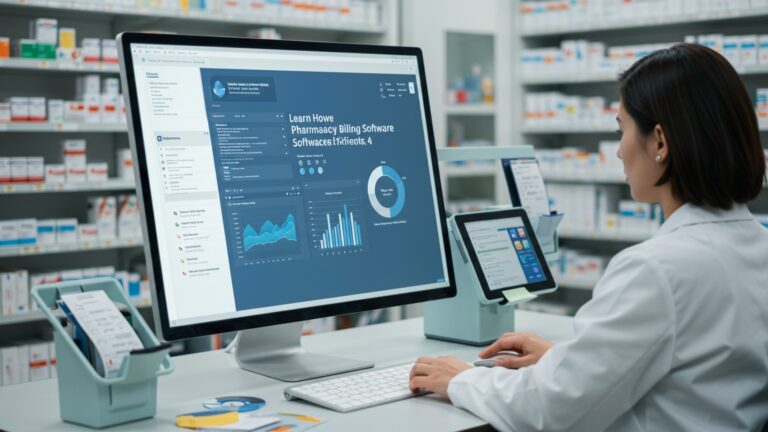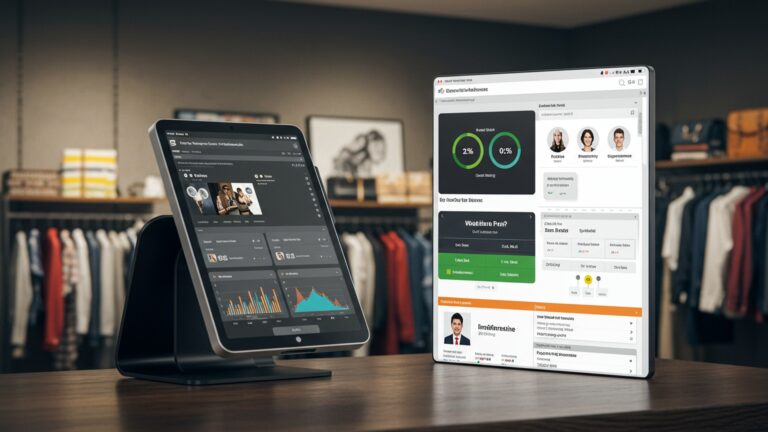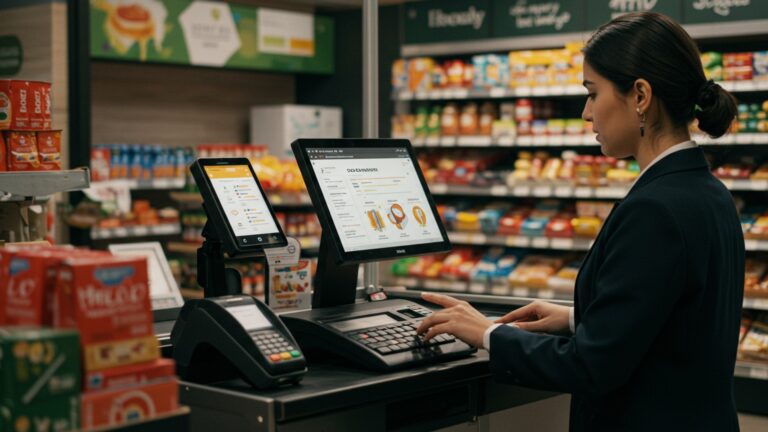7 Essential Features to Choose the Best Pharmacy POS Software
Modern pharmacies navigate a complex landscape, balancing precise inventory management with evolving patient care models and stringent regulatory compliance. The right technology is no longer a luxury but a necessity, transforming everything from prescription fulfillment to customer engagement. As digital health solutions become standard, choosing the best pharmacy POS software critically impacts operational efficiency, data security. profitability. Current trends demand systems that effortlessly integrate telehealth consultations, manage intricate insurance claims. provide real-time analytics for proactive stock control of sensitive medications. Ignoring these capabilities risks operational bottlenecks and missed opportunities for enhanced patient service in a competitive market.

1. Robust Inventory Management with Expiry Tracking
At the heart of any efficient pharmacy operation lies meticulous inventory control. For a pharmacy, managing stock isn’t just about knowing what’s on the shelves; it’s about life-saving medications, controlled substances. products with strict expiry dates. The best pharmacy POS software offers an inventory management system that goes far beyond basic stock counts.
What it entails:
- Real-time Stock Levels
- Automated Reordering
- Expiry Date Tracking
- Lot Number Tracking
- Multi-Location Support
Instantly know what’s in stock, what’s running low. what’s out. This prevents missed sales and ensures patients receive their necessary medications without delay.
Set minimum stock thresholds. the system can automatically generate purchase orders or alert you when it’s time to reorder. This streamlines procurement and reduces manual effort.
This is non-negotiable for pharmacies. The software should track expiry dates for every item, flagging those nearing expiration to allow for proactive management (e. g. , rotation, returns, or special offers before they become unsellable). A sophisticated system might even integrate with wholesale distributors to return expired or near-expired products.
Essential for recalls and quality control. The ability to trace specific batches of medication is critical for patient safety and regulatory compliance.
If you operate more than one pharmacy, the software should provide a centralized view of inventory across all locations, enabling efficient stock transfers and consolidated purchasing.
Real-world application:
Consider a scenario where a new flu strain emerges, leading to a sudden surge in demand for specific antiviral medications. A pharmacy utilizing the best pharmacy POS software with robust inventory management can quickly identify dwindling stock, automatically trigger reorders with preferred suppliers. even check stock levels at sister branches to redistribute supply. Simultaneously, it would flag any existing stock nearing its expiry date, ensuring no outdated medication is dispensed, a critical aspect of patient safety.
2. Seamless Prescription Management and Workflow Integration
The core function of a pharmacy revolves around dispensing prescriptions accurately and efficiently. The best pharmacy POS software needs to be more than just a sales terminal; it must be an integral part of the prescription workflow, minimizing errors and maximizing throughput.
Key components:
- Electronic Prescription (e-Rx) Integration
- Patient Profile Management
- Dispensing Workflow Automation
- Clinical Decision Support
- Refill Management
Direct integration with Electronic Medical Records (EMR) and Electronic Health Records (EHR) systems used by prescribers. This allows for secure, digital transmission of prescriptions, reducing transcription errors and speeding up the dispensing process. Many systems utilize industry standards like HL7 for this data exchange.
Comprehensive records including allergies, existing conditions, current medications, insurance details. preferred communication methods. This allows pharmacists to conduct thorough drug utilization reviews (DURs) and identify potential interactions.
Guided steps for prescription filling, including verification, labeling, counting. final check. This reduces manual steps, improves accuracy. provides an audit trail for each prescription.
Features that flag potential drug interactions, allergies, duplicate therapies, or dosage errors based on the patient’s profile and medication history. This acts as a crucial safety net for pharmacists.
Automated reminders for patients when refills are due. easy processing of refill requests, often integrated with a patient portal or app.
Technical explanation:
Integration with EMR/EHR systems often happens through APIs (Application Programming Interfaces). An API acts as a bridge, allowing different software applications to communicate and exchange data securely. For example, when a doctor sends an e-Rx, the EMR system’s API sends the prescription data (patient info, drug, dosage, quantity) to the pharmacy POS system’s API, which then populates the relevant fields in the pharmacy’s dispensing module.
// Simplified example of an e-Rx API call (conceptual)
POST /api/v1/prescriptions
Host: pharmacypos. example. com
Content-Type: application/json
Authorization: Bearer [YOUR_AUTH_TOKEN] { "patientId": "PAT-00123", "prescriberId": "DOC-45678", "medication": { "drugName": "Amoxicillin", "strength": "500mg", "form": "capsule" }, "dosage": "1 capsule three times daily", "quantity": 30, "refills": 2, "issueDate": "2023-10-26"
}
This seamless data flow is what makes the best pharmacy POS software so effective in modern healthcare.
3. Robust Customer Relationship Management (CRM) and Patient Profiles
In today’s competitive healthcare landscape, patient loyalty is paramount. The best pharmacy POS software goes beyond transactional processing to foster strong, lasting relationships with customers. A comprehensive CRM module is key to understanding and serving your patient base better.
Essential CRM features:
- Detailed Patient Profiles
- Targeted Communication
- Loyalty Programs
- Communication Tools
- Preference Tracking
Beyond basic demographics, these profiles should include communication preferences, purchase history (both prescription and OTC), loyalty program enrollment, notes from pharmacist consultations. even family linkages for household accounts.
The ability to segment patients based on their needs or purchase history. For instance, sending reminders for flu shots to patients over 65, or offering promotions on diabetic supplies to relevant individuals.
Manage points, discounts, or special offers for frequent customers. This encourages repeat business and provides valuable data on customer behavior.
Integrated SMS, email, or in-app messaging capabilities for appointment reminders, refill notifications, promotional offers, or health tips.
Record preferred pickup times, communication channels, or even specific generic vs. brand preferences, enhancing personalized service.
Case study perspective:
Imagine “HealthFirst Pharmacy” uses the best pharmacy POS software with a strong CRM. They notice through purchase history that Mrs. Johnson frequently buys a specific brand of blood pressure monitor. Their system automatically sends her an email with a discount code when a new, improved model of that brand arrives, or when her device might be due for calibration. Moreover, the system flags her for an annual wellness check reminder, demonstrating a proactive approach to her health, which builds immense trust and loyalty.
4. Comprehensive Reporting and Analytics
Data is power. for a pharmacy, understanding operational metrics is crucial for profitability, efficiency. compliance. The best pharmacy POS software provides in-depth reporting and analytics capabilities that turn raw sales and inventory data into actionable insights.
Key reporting functionalities:
- Sales Performance
- Inventory Turnover
- Profitability Analysis
- Employee Performance
- Prescription Volume & Type
- Customizable Reports
- Data Visualization
Track sales by product, category, time of day, staff member. payment type. Identify best-selling items, peak hours. opportunities for staff training.
comprehend how quickly different products are selling. This informs purchasing decisions and helps avoid dead stock.
Report on gross margins, net profit. return on investment for various product lines or services.
Track individual employee sales, dispensing volume. efficiency, aiding in performance reviews and scheduling.
review trends in prescription types, insurance utilization. dispensing patterns.
The ability to create bespoke reports tailored to specific business needs, perhaps for a quarterly board meeting or an internal audit.
Presenting data in easy-to-comprehend charts and graphs (e. g. , bar charts for sales trends, pie charts for product categories).
Actionable takeaway:
If your reports show a significant drop in OTC cough and cold sales during certain months, you might reallocate shelf space or adjust marketing efforts. If a particular staff member consistently has higher average transaction values, you could examine their sales techniques for best practices. The best pharmacy POS software provides these insights, allowing you to make data-driven decisions that improve your bottom line and patient care.
| Report Type | Key Metric | Business Insight |
|---|---|---|
| Sales by Category | Revenue per category (e. g. , OTC, Prescription, Sundries) | Identifies high-performing departments, informs marketing strategies. |
| Inventory Turnover | Number of times inventory is sold and replaced over a period | Highlights fast-moving vs. slow-moving items, optimizes stock levels. |
| Prescription Fill Rate | Percentage of prescriptions filled successfully | Indicates operational efficiency and potential stock issues. |
| Average Transaction Value (ATV) | Average amount spent per customer visit | Measures effectiveness of upselling/cross-selling efforts. |
5. Secure Payment Processing and Multi-Option Support
In an age where digital transactions are the norm, secure and flexible payment processing is non-negotiable for the best pharmacy POS software. Patients expect convenience and reassurance that their financial data is protected.
Critical payment features:
- EMV Compliance
- PCI DSS Compliance
- Diverse Payment Options
- Integrated vs. Standalone Terminals
- Flexible Payment Plans/Financing
- Refund and Void Management
Support for chip cards (Europay, MasterCard. Visa) is crucial to reduce fraud and shift liability away from the merchant.
Adherence to Payment Card Industry Data Security Standard (PCI DSS) is vital for protecting cardholder data. The software and integrated hardware should ensure sensitive insights is encrypted and handled securely.
Accept various payment methods, including credit/debit cards, mobile payments (Apple Pay, Google Pay), contactless payments, FSA/HSA cards. gift cards.
An integrated system (where the POS communicates directly with the payment terminal) reduces manual entry errors and speeds up transactions compared to standalone terminals.
For higher-cost items or services, the ability to offer installment plans or integrate with third-party patient financing options can be a significant advantage.
Easy and secure processing of returns, refunds. voided transactions, with proper audit trails.
Explanation of PCI DSS:
PCI DSS is a set of security standards designed to ensure that all companies that process, store, or transmit credit card details maintain a secure environment. It involves requirements like building and maintaining a secure network, protecting cardholder data, maintaining a vulnerability management program, implementing strong access control measures, regularly monitoring and testing networks. maintaining an details security policy. When choosing the best pharmacy POS software, ensure its payment processing components are certified as PCI compliant, protecting both your business and your customers.
6. Regulatory Compliance and Robust Audit Trails
Pharmacies operate within a heavily regulated environment. Non-compliance can lead to severe penalties, loss of license. damage to reputation. The best pharmacy POS software isn’t just about selling; it’s about helping you meet your legal obligations and maintain transparency.
Key compliance features:
- HIPAA Compliance
- Controlled Substances Tracking
- Prescription Audit Trails
- Pricing and Reimbursement Compliance
- Signature Capture
- Reporting for Regulatory Bodies
Health Insurance Portability and Accountability Act (HIPAA) ensures the privacy and security of patient health data (PHI). The POS software must have features like secure data storage, access controls. audit logs to track who accessed what patient data and when.
Strict regulations govern the dispensing of controlled substances. The software should facilitate accurate tracking, reporting (e. g. , to state Prescription Drug Monitoring Programs – PDMPs). secure storage management.
Every action related to a prescription – from entry to dispensing – should be logged, including user ID, timestamp. details of the action. This is invaluable for investigations, audits. error resolution.
Ensure accurate pricing based on various insurance plans, government programs (like Medicaid/Medicare). private pay options. The software should help manage complex reimbursement rules.
Digital capture of patient signatures for prescription pickups, HIPAA acknowledgements, or purchase of age-restricted items, creating a clear record.
Generate reports required by state pharmacy boards, DEA, or other health authorities with ease.
Real-world scenario:
An inspector from the DEA arrives for an audit of controlled substance dispensing. With the best pharmacy POS software, the pharmacist can quickly generate a detailed report showing every transaction for Schedule II drugs, including dispenser, patient, quantity. date/time. The system’s audit trail also confirms that only authorized personnel accessed these records, demonstrating full compliance and transparency, avoiding potential fines or sanctions.
7. Scalability and Extensive Integration Capabilities (API)
Your pharmacy isn’t static; it will grow and evolve. The best pharmacy POS software needs to be adaptable, not just for today’s needs but for tomorrow’s expansion. This means it must be scalable and capable of integrating seamlessly with other critical business systems.
What to look for:
- Scalability
- User Accounts
- Transaction Volume
- Multi-Location Support
- Data Storage
- Integration Capabilities (API)
- Wholesale Distributors
- Accounting Software
- Telepharmacy Platforms
- E-commerce/Online Stores
- Patient Engagement Apps
Can it easily accommodate more staff members as your team grows?
Can it handle increased sales and prescription volume without slowing down?
If you plan to open more branches, can the software support a centralized system for all locations?
Is there sufficient and expandable storage for growing patient and transaction data?
The ability to connect with other software platforms is vital for a holistic business operation. Look for systems that offer well-documented APIs.
Automate ordering and inventory updates directly with your suppliers.
Sync sales data, expenses. payroll directly with platforms like QuickBooks or Xero, streamlining financial management.
Integrate for remote dispensing or consultation services.
If you sell OTC products online, ensure your POS can sync inventory and sales data.
Connect with mobile apps for refill requests, appointment scheduling. secure messaging.
Why API integration matters:
An API (Application Programming Interface) is a set of rules and protocols that allows different software applications to communicate with each other. For example, if your POS system integrates with your accounting software via an API, every sale recorded in the POS can automatically update your general ledger in the accounting system. This eliminates manual data entry, reduces errors. provides a real-time view of your financial health. Without robust API capabilities, you’ll be stuck with manual data transfers, leading to inefficiencies and potential inaccuracies, preventing you from truly leveraging the power of the best pharmacy POS software.
// Conceptual API call for syncing sales data to accounting software
POST /api/v1/accounting/sales_transaction
Host: accountingsoftware. example. com
Content-Type: application/json
Authorization: Bearer [ACCOUNTING_AUTH_TOKEN] { "transactionId": "POS-TXN-001234", "date": "2023-10-26T14:30:00Z", "totalAmount": 150. 75, "items": [ { "sku": "RX-MED-001", "description": "Amoxicillin 500mg (Prescription)", "quantity": 1, "unitPrice": 120. 50, "category": "Prescription" }, { "sku": "OTC-VIT-005", "description": "Vitamin D Supplement", "quantity": 1, "unitPrice": 30. 25, "category": "OTC" } ], "paymentMethod": "Credit Card", "pharmacyLocationId": "LOC-001"
}
Choosing a scalable system with strong integration capabilities ensures your investment in the best pharmacy POS software will continue to serve your pharmacy effectively as it grows and adapts to future technological advancements.
Conclusion
Choosing the ideal pharmacy POS isn’t merely about ticking boxes; it’s about empowering your practice to thrive in a dynamic healthcare landscape. Remember, features like seamless inventory management, especially for high-turnover medications or seasonal demands. robust prescription tracking are non-negotiable. My personal tip is to deeply consider how a system handles integration – can it easily connect with e-prescribing platforms or even telemedicine services, a growing trend post-2020? This isn’t just about efficiency; it’s about future-proofing your operations, ensuring you’re ready for evolving patient needs and regulatory shifts. Before committing, envision your daily workflow with the software. Ask for a live demo focused on your unique challenges, like managing controlled substance reporting or complex insurance claims. Don’t settle for “good enough.” Opt for a solution that truly streamlines your operations, freeing up valuable time for patient care. The right POS software is an investment that pays dividends in accuracy, compliance. ultimately, your pharmacy’s success. Discover more modern pharmacy POS benefits here.
More Articles
5 Essential Pharmacy Management Software Benefits You Need to Know
Top 6 Pharmacy POS System Benefits for Streamlining Your Operations
How to Select the Perfect POS Software for Your Retail Store
Master Choosing the Best POS Software in India for Your Business Needs
A Practical Guide to Implementing Cloud Based POS Software Seamlessly
FAQs
Why can’t I just use any standard POS system for my pharmacy?
Standard POS systems often lack critical features specific to pharmacies, like robust prescription management, drug interaction alerts, precise inventory tracking for controlled substances and expiry dates. integration with insurance claims. A specialized pharmacy POS ensures compliance, patient safety. efficient workflow.
What’s one of the biggest headaches a good pharmacy POS can solve with inventory?
One huge relief is precise inventory management. The best systems track every single medication, including batch numbers, expiry dates. controlled substance counts. They can even automate reorders, helping you avoid stockouts of critical drugs and reduce waste from expired products.
How does the right POS software help keep patients safe and prescriptions accurate?
Excellent pharmacy POS software is a safeguard. It manages patient profiles, tracks prescription history. often includes built-in alerts for potential drug interactions or allergies. This helps pharmacists catch errors before they happen, ensuring patients receive the correct medication safely.
Is data security a big deal for pharmacy POS, like with patient records?
Absolutely, it’s massive. Pharmacy POS systems handle sensitive patient health details (PHI), so strong security and HIPAA compliance are non-negotiable. You need software that protects patient data from breaches and ensures all operations meet regulatory standards.
My staff spends forever on insurance claims; can a POS help with that?
Definitely! A top-notch pharmacy POS system often integrates directly with insurance providers. This streamlines the claims process, reduces manual data entry, minimizes errors. ultimately frees up your staff to focus more on patient care rather than paperwork.
What kind of useful info can I get from a good pharmacy POS to help my business grow?
A robust POS offers powerful reporting and analytics. You can pull data on sales trends, popular products, inventory turnover. even patient demographics. This insight helps you make smarter business decisions, optimize stock. tailor your services.
I’m worried about training my team on new software. How vital is ease of use?
Ease of use is super essential! A complex system can slow down operations and frustrate staff. Look for intuitive software with a clean interface that requires minimal training. This ensures your team can quickly adapt, operate efficiently. focus on patients without getting bogged down by complicated software.





